2025-07-15
Recently, the WTA·Silk Road Dialogue was held in Samarkand, Uzbekistan. During the event, guests from China and abroad engaged in an in-depth discussion on the topic "Emerging Markets and Marketing Strategies for Silk Road Tourism: How Social Media, KOLs, and Digital Promotion Unlock Growth Opportunities?"

Moderator: Dr. Song Rui, Director of Tourism Research Center, Chinese Academy of Social Sciences
Panelists:
Ms. Sally Young, CNNIC Vice President
Mr. Li Lingxiang, President of Service, Zhejiang Loong Airlines Co., Ltd.
Mr. Zou Tongqian, Vice Rector of "Silk Road" International University of Tourism and Cultural Heritage, Dean and Professor of China Academy of Culture and Tourism, Beijing International Studies University
Mr. Artem Klykov, Associate Professor of "Silk Road" International University of Tourism and Cultural Heritage and Hospitality Expert
Ms. Dinara Dultaeva, CEO of Dinara & Co
Mr. Zafar Abdullayev, Director of the PR and Marketing Department of Silk Road Samarkand Tourist Complex
Below are the key highlights from their conversation:

Moderator: UNESCO has referred to Samarkand as the "crossroads of civilizations". Over 1,300 years ago, the Chinese monk Xuanzang, in The Great Tang Dynasty Record of the Western Regions, praised this land for its fertile soil, ancient trees, and fine horses — expressing deep admiration. Today, we are honored to gather in this beautiful "Eternal City" to explore the theme "Carrying Forward Silk Road Legacy, Co-Creating Tourism’s Future". In the context of Silk Road tourism, where can we find new and emerging markets? In today’s digital age, how can we harness the power of social media and influencer marketing to promote destinations? Within the framework of the China-Uzbekistan all-weather comprehensive strategic partnership, how can our two countries further enhance mutual tourism through effective marketing? This roundtable will focus on marketing strategies for Silk Road tourism in emerging markets, including the use of social media, key opinion leaders (KOLs), and digital campaigns to uncover new opportunities for growth. We look forward to the valuable insights our distinguished guests will share.
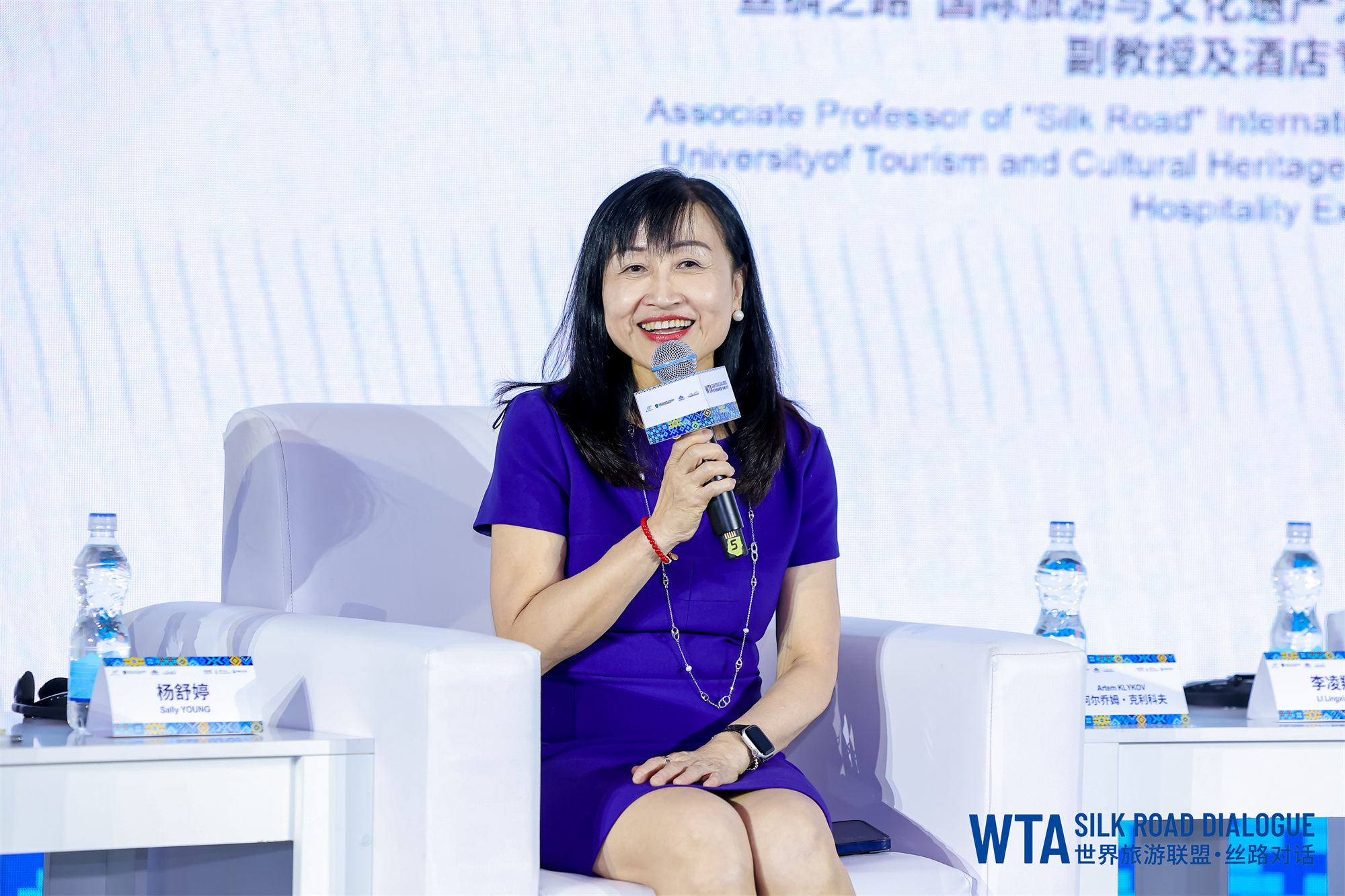
Ms. Sally Young: Based on global tourism marketing practices, I’ve proposed a ‘5W’ checklist for digital and KOL marketing:
Why – What are the destination’s promotional objectives?
What – What core message does the destination want to convey?
Who – Who is the target audience?
Where – Where are the target markets located?
When – What are the optimal seasons for campaigns?
These "5Ws" are highly applicable to destination marketing. In the era of new media, building brand awareness is particularly critical for many emerging market destinations. However, whether we use traditional media or new digital channels, ensuring message consistency and fostering trust are equally essential. By prioritizing these five elements, we can then move on to discuss actionable strategies for effective implementation.
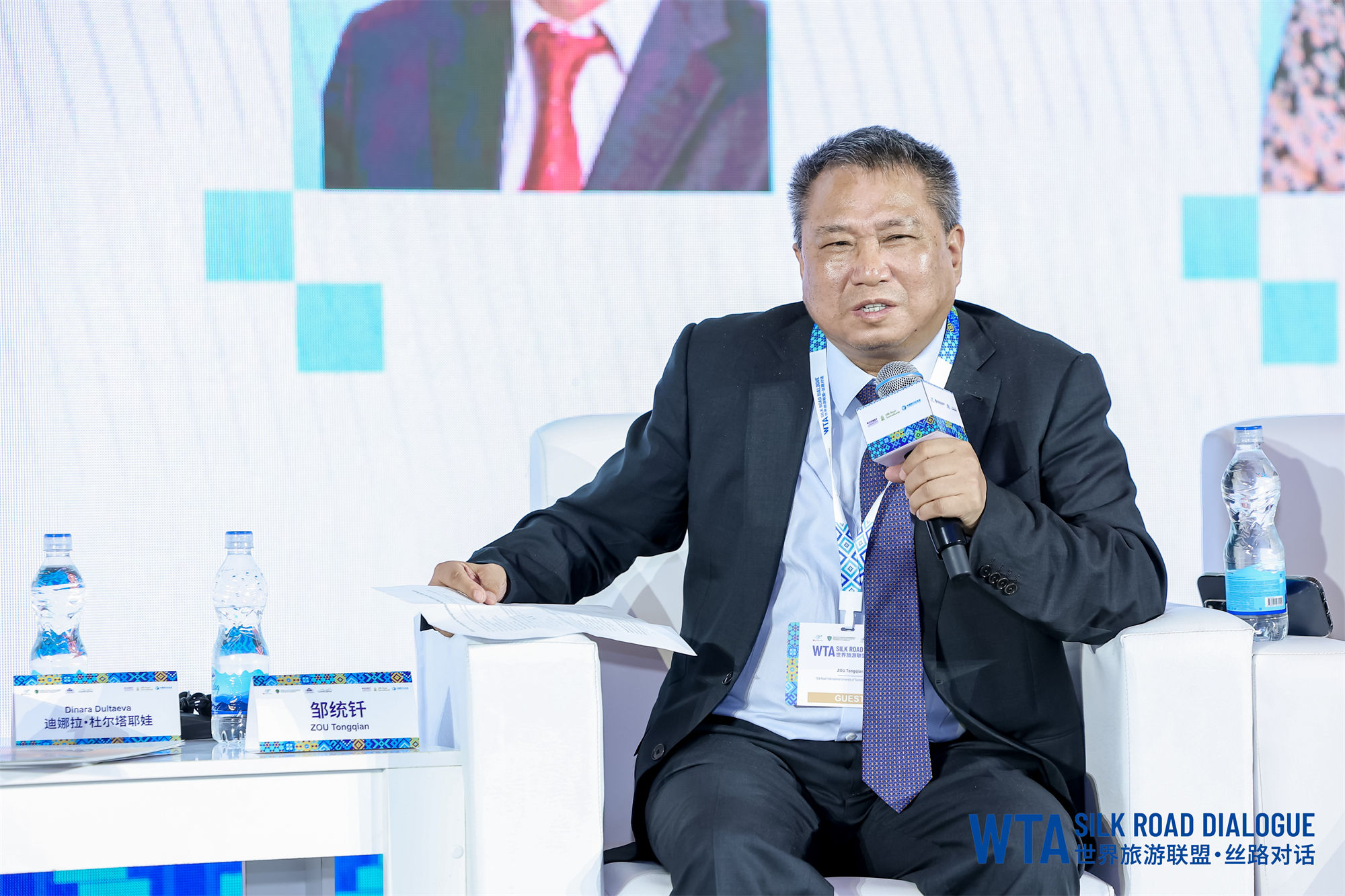
Mr. ZOU Tongqian: I believe many successful Chinese cases offer valuable lessons for replication, such as the viral rise of Zibo barbecue, the Harbin Ice Festival, and the Jiangsu Football City League. The key to their success lies in generating online buzz and creating social media hotspots. In my view, four factors make a destination go viral:
Aesthetic Appeal – Visual attractiveness is rapidly becoming one of the most important drivers in tourism.
Unique Content – Destinations need distinctive local landscapes, tourism resources, and a strong city image as their foundation.
Photogenic Quality – The destination must be easy to share online, creating a "can’t-miss" allure for potential visitors.
Emotional Resonance – Destinations that evoke emotional connections and spark social media interactions naturally gain more traction.
An equally crucial supporting element is "ritual interaction". For instance, the recent success of the Jiangsu Football City League can be attributed to several factors: it involves a popular sports event (football matches), ensures broad public participation with low entry barriers, successfully stirs regional collective pride, and, ideally, generates economic benefits by converting massive online traffic into actual revenue. This model presents enormous potential for Silk Road projects. We should delve deeper into local cultures and organize friendly competitive events that foster positive rivalries among participants. By doing so, we can effectively create social media hotspots, ultimately converting online attention into tangible growth for Silk Road tourism.
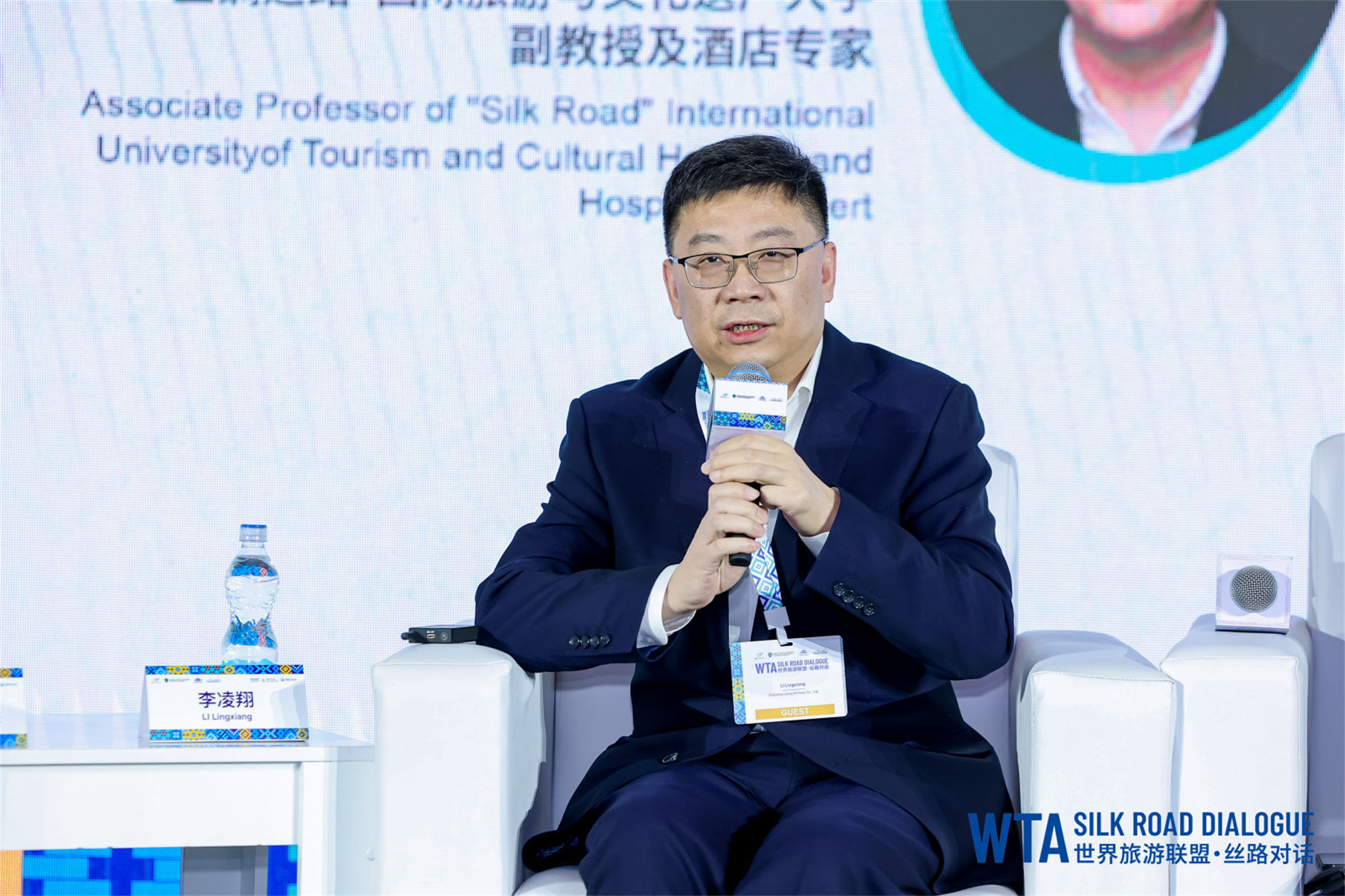
Mr. LI Lingxiang: At Loong Air, our Silk Road marketing strategy begins with a strong foundation in our route network. By the first half of 2025, we will have launched six China-Central Asia routes, transporting over 320,000 passengers—nearly half of them to Uzbekistan. Our approach is centered around a "4C" model: Culture as the core, supported by three key pillars — Convergence (products), Communication (media), and Collaboration (partners).
One of our most visible product Convergence is the aircraft livery. Out of our 73 planes, 33 feature special designs—21 of which are dedicated to Silk Road themes, spread across nine categories highlighting Zhejiang elements and Silk Road cultures. These 21 planes travel to 170+ cities along the China-Central Asia corridor, reaching an audience of 280 million people annually. Additionally, we operate over 100 themed flights each year, further reinforcing our Silk Road connection.
For communication (media), we’re partnering with Pop Mart to introduce ‘Labubu’-themed planes on routes such as Xi’an/Chengdu-Tashkent and Xi’an-Samarkand. This collaboration brings pop culture to the skies, aligning perfectly with our brand’s theme of bridging cultures.
Equally important is Collaboration (partners) — we’ve cultivated a robust ecosystem with over 100 partners across the hotel, tourism, and cultural sectors. We’ve also established strategic alliances with key airports in Xi’an and Uzbekistan to expand our reach and enhance the travel experience.
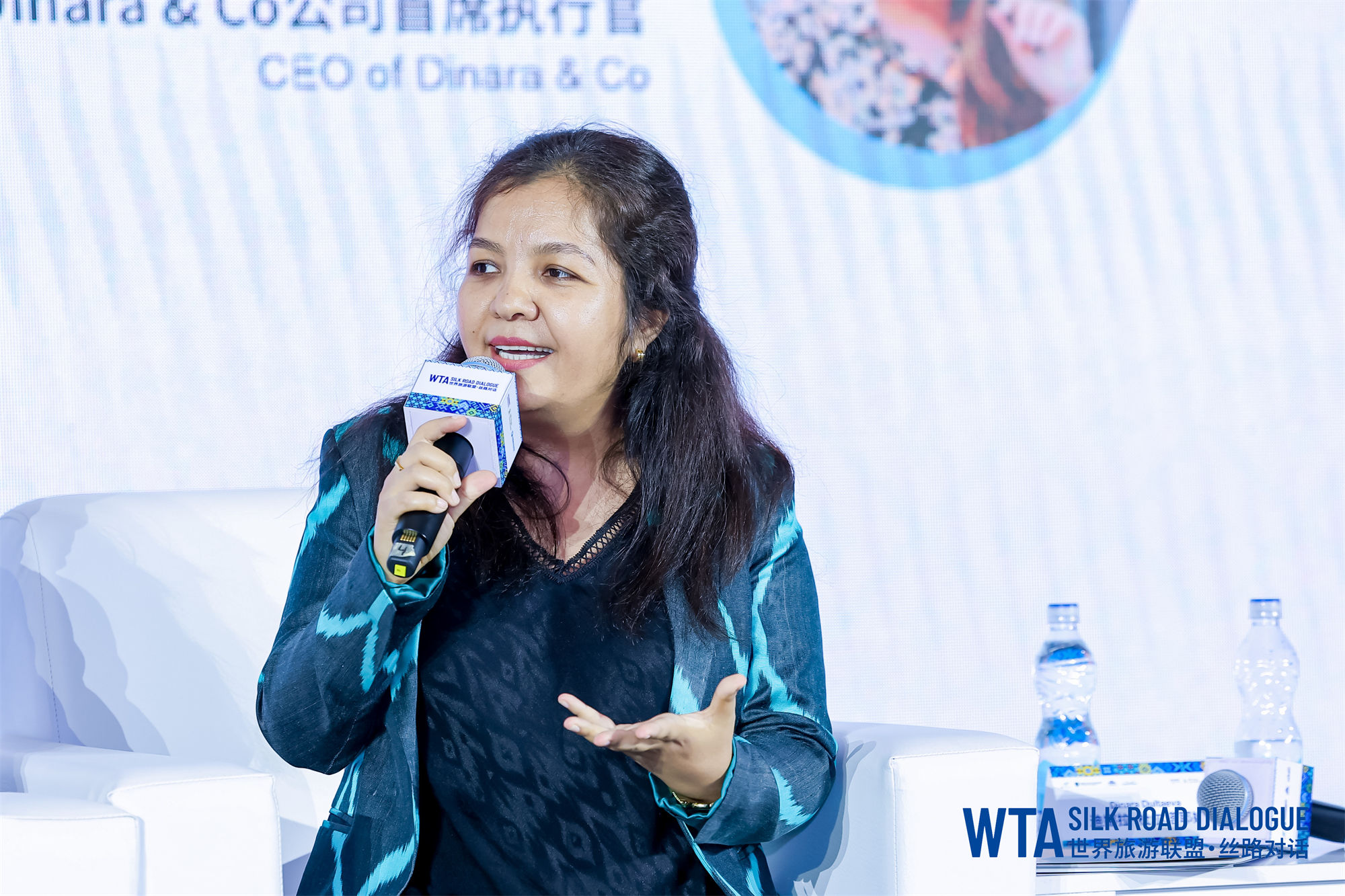
Ms. Dinara Dultaeva: Destination branding has undergone a profound transformation. A decade ago, marketing efforts were centered around places and events; today, the focus has shifted to authentic human experiences. Our Uzbekistan magazine perfectly illustrates this evolution. Our new covers now prioritize real emotions over generic representations. Since launching our Chinese edition in 2014 (while primarily in English), we’ve periodically produced special issues focused on China. Each edition now features true stories from individuals—artists, jewelers, designers, scholars—who share their unique experiences of Uzbekistan across print, digital, and social platforms.
A prime example of this approach is our collaboration with Uzbekistan Airways. They sought premium inflight content for global travelers. As content specialists, we developed materials that build anticipation before the flight, enhance the onboard experience, and inspire future travels. This win-win partnership highlights how content can be a powerful tool for fostering mutual understanding and growth. With our extensive archives on Uzbekistan, we remain committed to strengthening China-Uzbekistan ties through media engagement, storytelling and content creation.
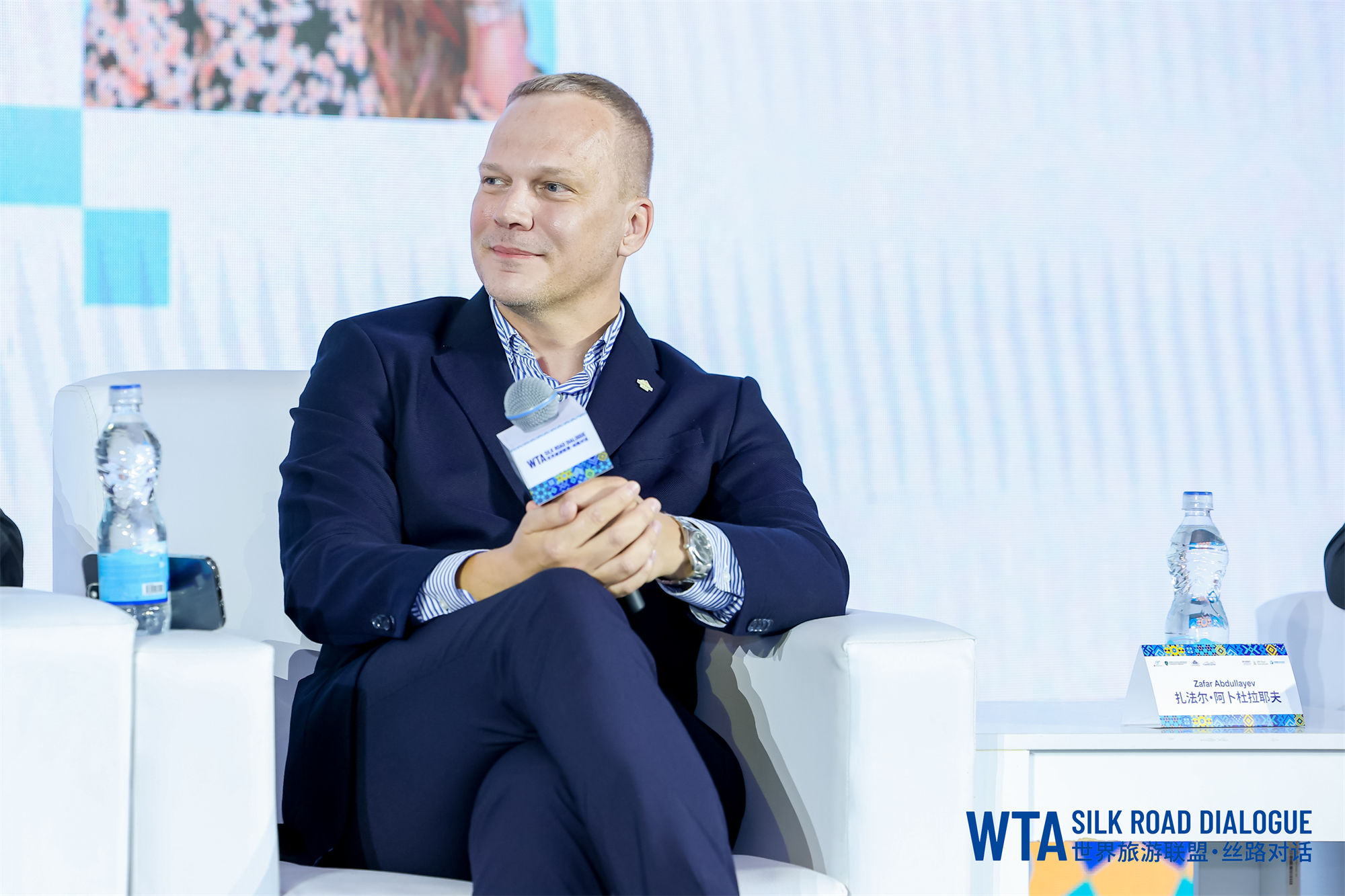
Mr. Artem Klykov: Today, the role of hotels has fundamentally transformed — they are no longer just places to stay, but platforms for travelers to experience and share emotions. The hotel and tourism industries are fundamentally about selling experiences, not physical products. Therefore, creating unforgettable emotional experiences that bring joy and satisfaction to our guests is our true mission.
Uzbekistan’s hotel market remains an emerging sector, but significant changes have taken place over the past four to five years. International chains have brought standardized services, operational processes, and rules, but the true challenge lies in blending these global standards with our unique hospitality culture.
Across Khiva, Bukhara, and beyond, independent boutique hotels excel at preserving cultural authenticity through immersive offerings — astronomy masterclasses, pottery workshops, woodcarving — experiences that connect guests to our cultural identity and heritage. These unique offerings are part of what sets us apart in the global tourism market.
At present, we are enhancing service, safety, and hygiene standards in line with international norms, while steadfastly preserving our distinct cultural identity. We must also give attention to digital content, as today’s tourists, especially younger generations and high-end travelers, are more inclined toward video content. The power of digital marketing continues to grow. In our digital marketing and social media content, we must focus on storytelling and visual immersion, ensuring that the content resonates with Chinese tourists by using Mandarin.
In conclusion, by blending the standards set by international hotel brands with our own unique cultural identity, we can deliver experiences that are both consistent and sustainable. This consistency is key to long-term growth and sustainability, and it requires a continuous commitment to refining our hospitality service every day.
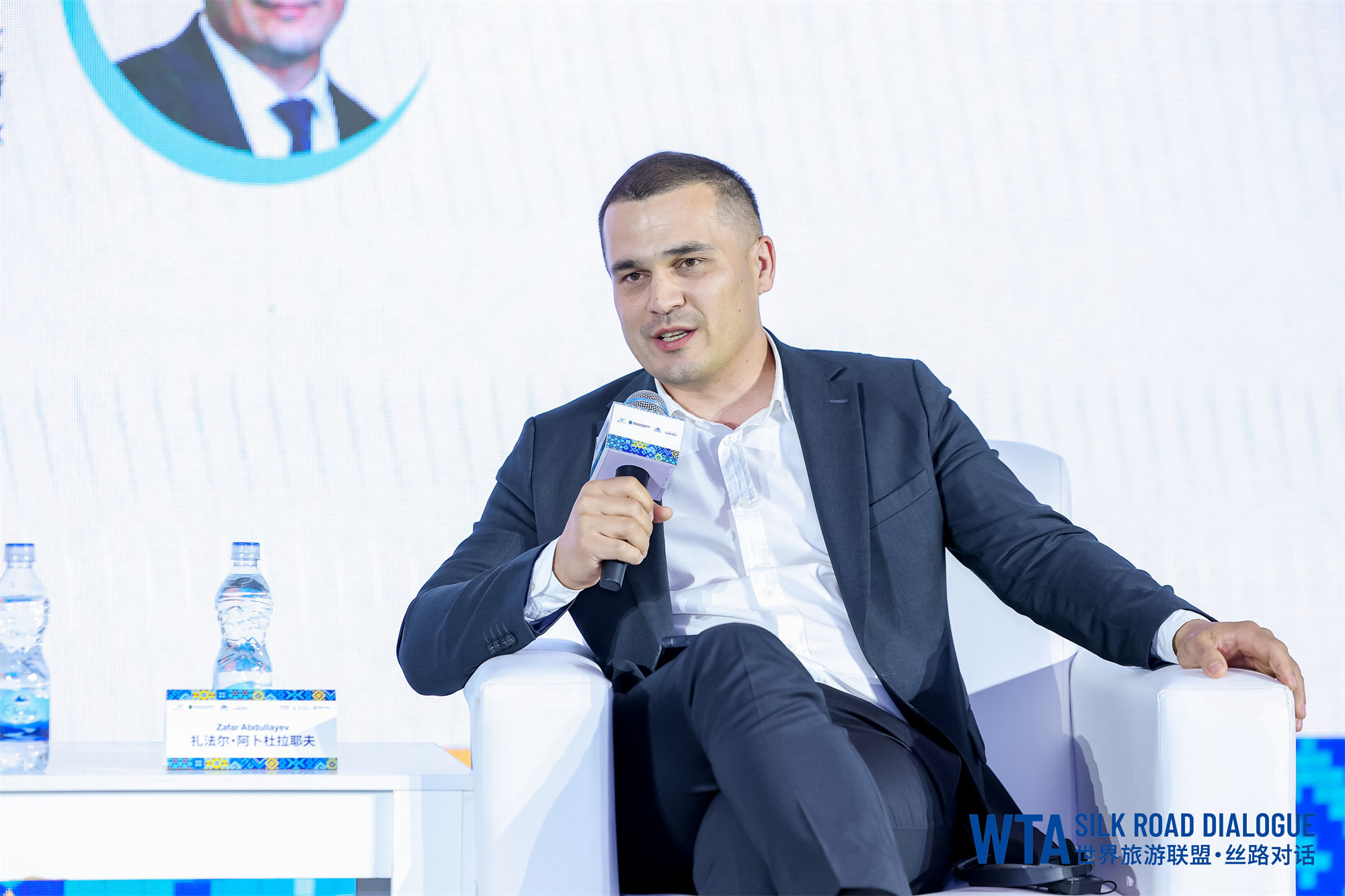
Mr. Zafar Abdullayev: Today, simply promoting hotels or entertainment venues is no longer enough. The true challenge lies in how we leverage these platforms to spark emotional connections and resonate with people on a deeper level. Personally, I believe one of the most effective approaches is collaborating with online KOLs. Another powerful strategy is organizing a diverse range of MICE events — whether it’s business meetings, incentive trips, large exhibitions, or world-class concerts. Hosting such events allows us to attract a global audience. It’s not just about showcasing a specific resort or venue—it’s about enhancing the image of an entire city, or even a whole country. It’s these bold and dynamic initiatives that fuel creativity and inspire new ideas. I truly believe that if we can act quickly, capture great ideas, and bring them to life better and faster than anyone else, we’ll emerge victorious.
Moderator: For many, the Silk Road may have once seemed like a distant concept, confined to the pages of history books. But today, as we gather here for this dialogue, through face-to-face exchanges and shared experiences, that ancient route comes alive. Uzbekistan, as the most populous and second-largest economy in Central Asia, plays a pivotal role in advancing regional cooperation and cross-border connections. Through this forum, we aim not only to deepen tourism collaboration between China and Uzbekistan, but also to strengthen ties between China and all the countries of Central Asia. Let us seize this opportunity to move forward together, toward a brighter, more interconnected future.